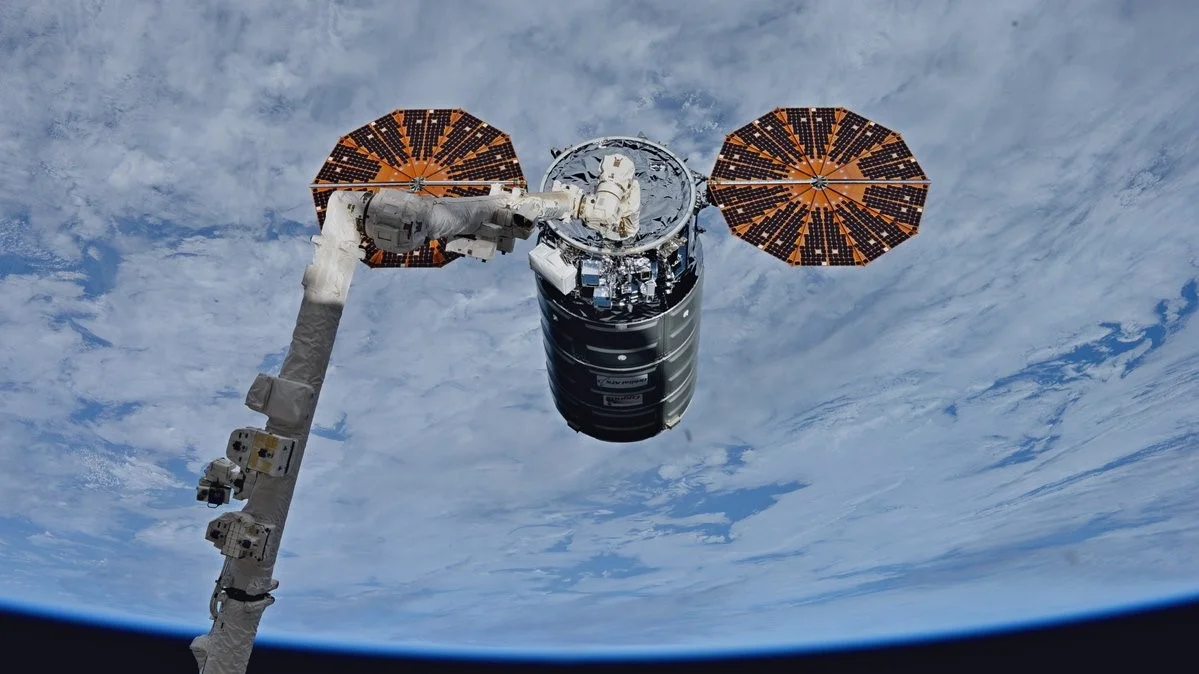The S.S. Gene Cernan OA-8 Cygnus arrives at ISS
/After a two-day trek, Orbital ATK’s OA-8 Cygnus cargo ship arrived at the International Space Station. The vehicle was berthed to the outpost at 7:15 a.m. EST (12:15 GMT) Nov. 14, 2017, and will remain attached for several weeks.
Named “S.S. Gene Cernan” after the late Moonwalker, the spacecraft is loaded with about 3,350 kilograms of pressurized cargo. Over the coming weeks, the space station’s Expedition 53 crew will unload the equipment.
“Today’s flawless rendezvous and arrival at the International Space Station signals the start of a busy month for Cygnus as the spacecraft once again demonstrates its capability beyond cargo delivery and removal,” Frank Culbertson, president of Orbital ATK’s Space Systems Group, said in company press release. “On this mission, the ‘S.S. Gene Cernan’ Cygnus will act as an extension of the space station for the first time by supporting science experiments inside the cargo module while docked to the laboratory.”
The OA-8 mission includes several experiments. Among them include the following:
- The E. coli AntiMicrobial Satellite (EcAMSat) mission: According to NASA this experiment will investigate the effect microgravity has on the antibiotic resistance of E. coli.
- The Optical Communications and Sensor Demonstration (OCSD) project: This experiment will use a laser to test out high-speed optical data transmissions and small spacecraft proximity operations.
- The Biological Nitrogen Fixation in Microgravity via Rhizobium-Legume Symbiosis (Biological Nitrogen Fixation) investigation: This experiment aims to understand how low-gravity conditions affect the nitrogen fixation process of Microclover, which is a hardy plant that is drought tolerant.
- The Integrated Solar Array and Reflectarray Antenna (ISARA): NASA says this “hybrid solar power panel and communications solar antenna that can send and receive messages.” The space agency hopes the technology will be a “solution for sending and receiving information from faraway destinations, both on Earth and in space.”
The spacecraft launched on Sunday, Nov. 12, atop Orbital ATK’s Antares 230 rocket from the Mid-Atlantic Regional Spaceport at Wallops Island, Virginia.
After rendezvousing with the ISS, Flight Engineers Paolo Nespoli of the European Space Agency and Randy Bresnik of NASA used the robotic Canadarm2 to capture the spacecraft. That occurred at about 5:04 a.m. EST (10:04 GMT).
Over the next couple hours, ground teams commanded the robotic arm to move Cygnus from its position of about 10 meters beneath the Destiny laboratory module to just in front of the Earth-facing berthing port of the Unity module.
Now fully berthed, the freighter will spend about three weeks at the outpost before being loaded with trash and unneeded equipment. Then, in early December, the craft will be unberthed and commanded to deorbit over the Pacific Ocean for a destructive re-entry sometime later.
After unberthing, but before re-entry, Cygnus will begin a secondary mission: deploying 14 CubeSats via a NanoRacks deployer on the outside of the spacecraft. According to Orbital ATK, this will be a record number for the cargo craft.
NOTE: While this article was written by Derek Richardson, it was originally published at SpaceFlight Insider. Feel free to head over there to read all the stuff they write about!



